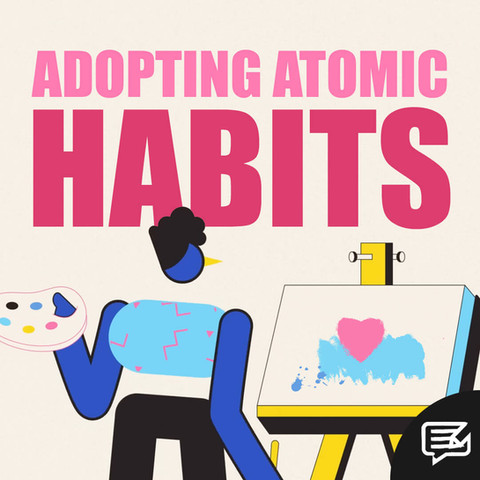
24.05.22
HOW AI HELPED VAL KILMER RECLAIM HIS VOICE
Going to the cinema in the late twentieth century would have been a very different experience without the acting talent of Mr. Val Kilmer. With iconic roles in everything from blockbusters like Top Gun (1986), Batman Forever (1995) and Heat (1995), to cult classics like True Romance (1993), in many ways Kilmer’s voice was the sound of the eighties and nineties.
Now, after a painful battle with throat cancer, scientists have been able to use a combination of artificial intelligence (AI) and archival audio to recreate and restore that voice for the actor.



In his day, no one could inhabit a role like Kilmer. With his penchant for method acting, chiseled good looks and unholy talent honed at Juilliard and on Broadway, Kilmer has portrayed everyone from Jim Morrison and Elvis, to Doc Holliday and, the ultimate historical figure, Bruce Wayne (did you know that Batman has been with us since the 1930s?).
His unique voice has always been a huge part of his success, and he played with it in unusual ways when getting into character. In addition to dressing like The Doors front man and hanging out at all his favourite Sunset Strip spots, before his audition for the part of Jim Morrison in Oliver Stone’s The Doors (1991), Kilmer memorised the lyrics to all of Morrison’s songs and sent it to the director. While Stone is said to have been largely unimpressed, the film’s producer Paul Rothchild said he was “shaken” by the performance and insisted on getting Kilmer in the studio to record songs as Morrison for the movie. Rothchild played Kilmer's version of “The End” for the band's guitarist, Robby Krieger, who told him, "I'm really glad they got 'The End'. We never got a recording of that live with Jim and now we've got it."
But then, in 2015, the acting legend received the news that he had throat cancer. Over the next couple of years, he would undergo chemotherapy and two tracheotomies: a procedure on the vocal cords known to alter the voice of the patient, making it raspy and breathless. For many patients, such treatment means adjusting to life with a stoma in their trachea, as Kilmer did - until last year.
In 2021, the actor was able to find his voice again - thanks to the hard, complex work carried out by scientists at British startup Sonantic. Using old recordings, AI technology and computer-generated speech, today Kilmer’s voice is virtually indistinguishable from his Iceman character in Top Gun.
Experts gathered audio recordings of the actor from his films, which were digitally 'cleaned' to remove background noise. They then generated transcripts from the audio before pairing the audio and text together in short chunks that could be fed to the AI during its training. The firm generated more than 40 different voice models and selected the 'most expressive one', said CTO John Flynn. Crucially, the actor can use the tool to help him communicate in his day-to-day life, by inputting new sentences for the AI to say.
Recreating someone’s voice is not just about the sound itself. The computer-generated voice can read any line of text with the subtleties in expression and tone that Kilmer himself would have used.
Kilmer, 61, said that after listening to the AI model he felt that his voice had been restored “in a way I’ve never imagined possible”, with the potential to now use the tool for voiceover work.
This kind of tech doesn’t have to be reserved for celebrities. Here in the UK, it is already possible to donate your money - or even your voice - to build a new voice for tracheotomy patients. The patient can pick any accent they want and someone from the area can be enlisted to record all phrases for them. There are other startups dedicated to this work, such as VocaliD. Whether you donate your voice or preserve it for your future self, the process only takes two to three hours.
According to VOICE22:
“It begins with a voice recording. This can either be done through their web portal or in a recording studio over at the clinic. If you're preserving your voice, you can choose from a selection of genres to read. You'll need to speak about 2,000 sentences for VocaliD to capture the full range of your voice, so they try to make it interesting. A computer then gives you a phrase, which you read back into the mic. This will go on for a few hours, then the recordings are turned over to VocaliD for processing.
“For those with limited speech to start with, VocaliD asks for a short sound sample, which they'll use to find a match in their Human Voicebank. Then, they'll blend those similar voices to create one that's true to you. You can always ask them for tweaks if you're not happy with how it sounds.
“Note that all of this happens within their website, making one of the best things about it not just the innovation, but the added accessibility to personalized voices. Normally, this process would cost you hundreds of thousands of dollars, but with VocaliD's approach, the cost has come down to a reasonable $1,499. It's still not cheap, mind you, but when you consider you'll be using that voice for the rest of your life, it seems worth the investment.”
Speaking to The Times in his new, youthful voice, Kilmer gave this short, but very moving speech:
“We all have the capacity to be creative. We’re all driven to share our deepest dreams and ideas with the world. When we speak of the most talented, creative people, they speak to us in a unique way. A phrase we often hear is ‘having a creative voice.’ But I was struck by throat cancer. After getting treated, my voice as I knew it was taken away from me. People around me struggle to understand me when I’m talking. But despite that, I still feel I’m the exact same person. Still the same creative soul. A soul that dreams ideas and stories constantly. But now I can express myself again. I can bring these dreams to you and show you this part of myself once more. A part that was never truly gone. Just hiding away.”
Clear, elegant, and stunningly realistic, this incredible piece of technology seems like something out of an eighties sci-fi movie that Mr. Kilmer himself might once have been up for a role in. Doesn’t his speech reveal the true potential of applications of technology in healthcare - not just to extend a patient’s life, but to restore a life truly worth living?
Conscious of our identities not just as bodies, but as individuals, I look forward to the day when this kind of AI technology is widely accessible - and will be watching closely for new developments in this space.

























































